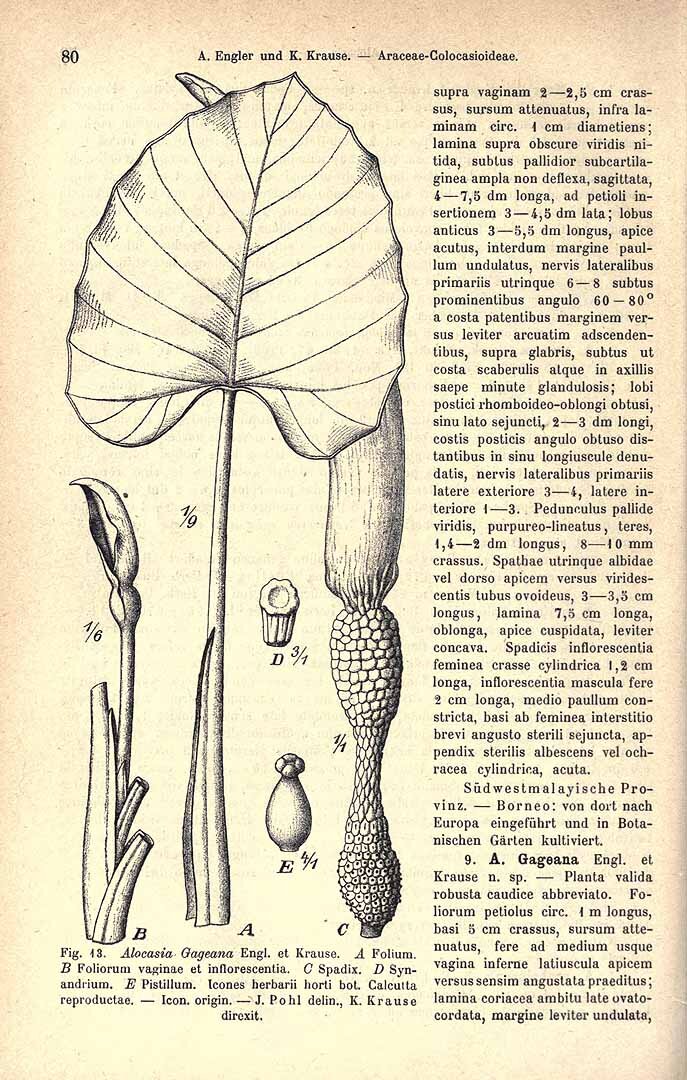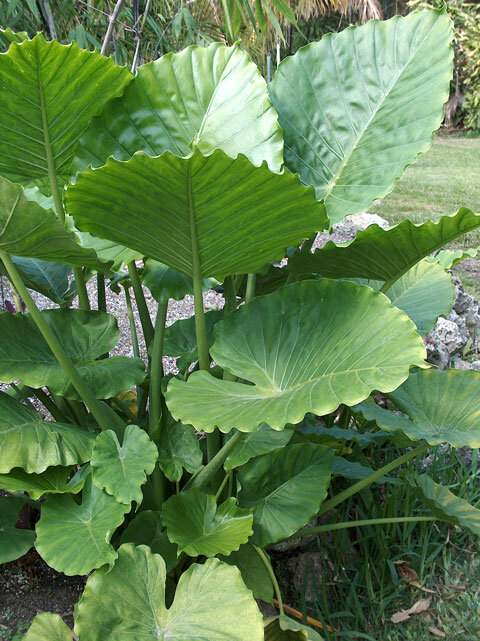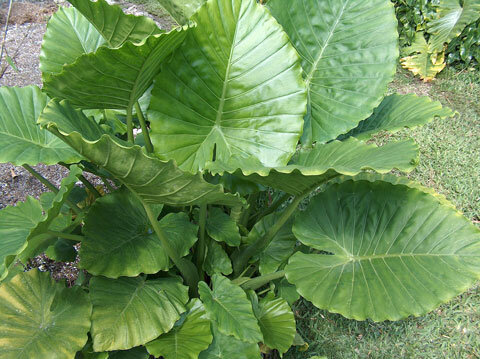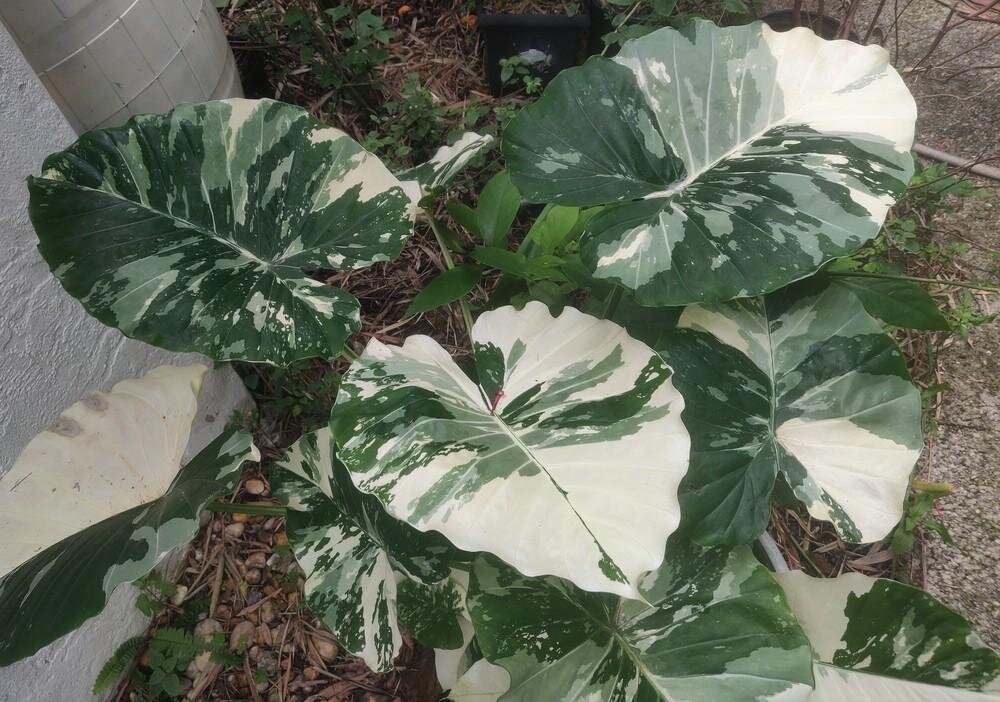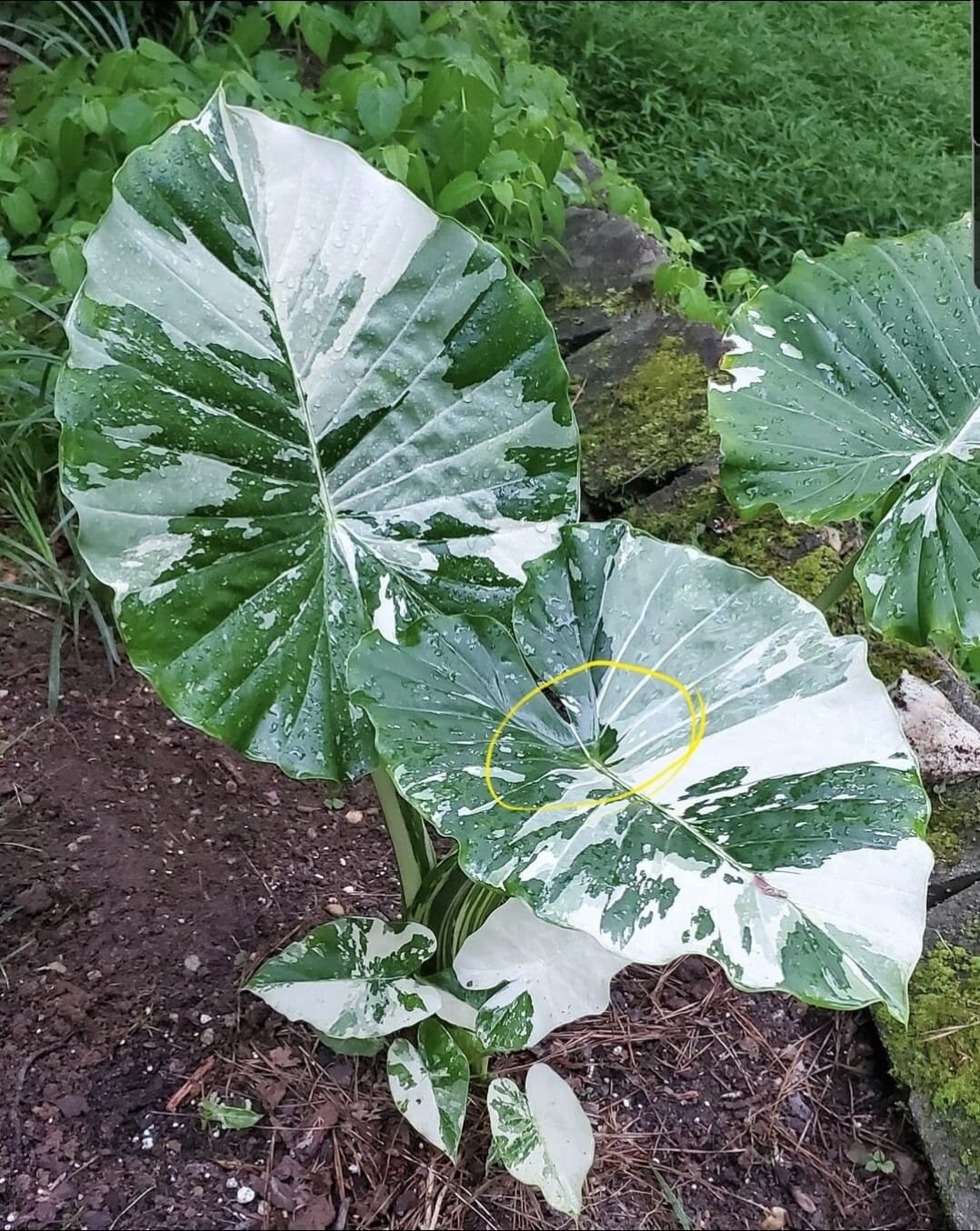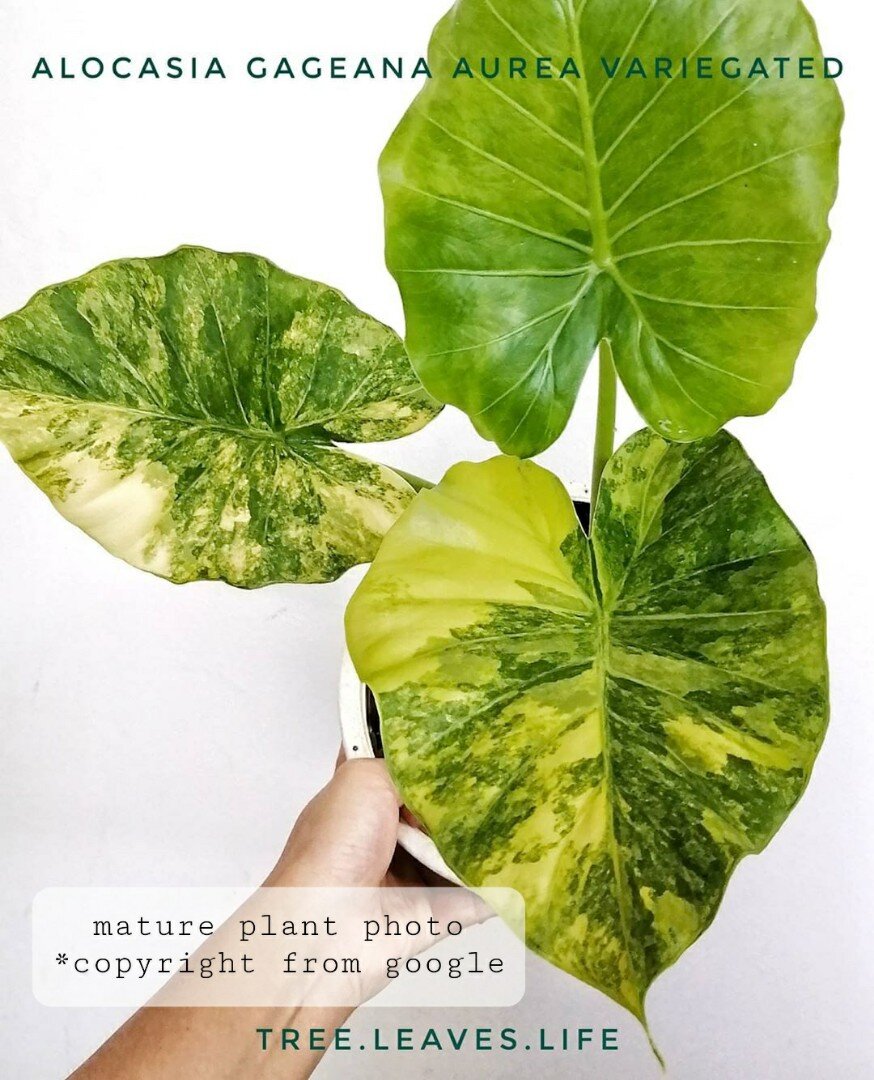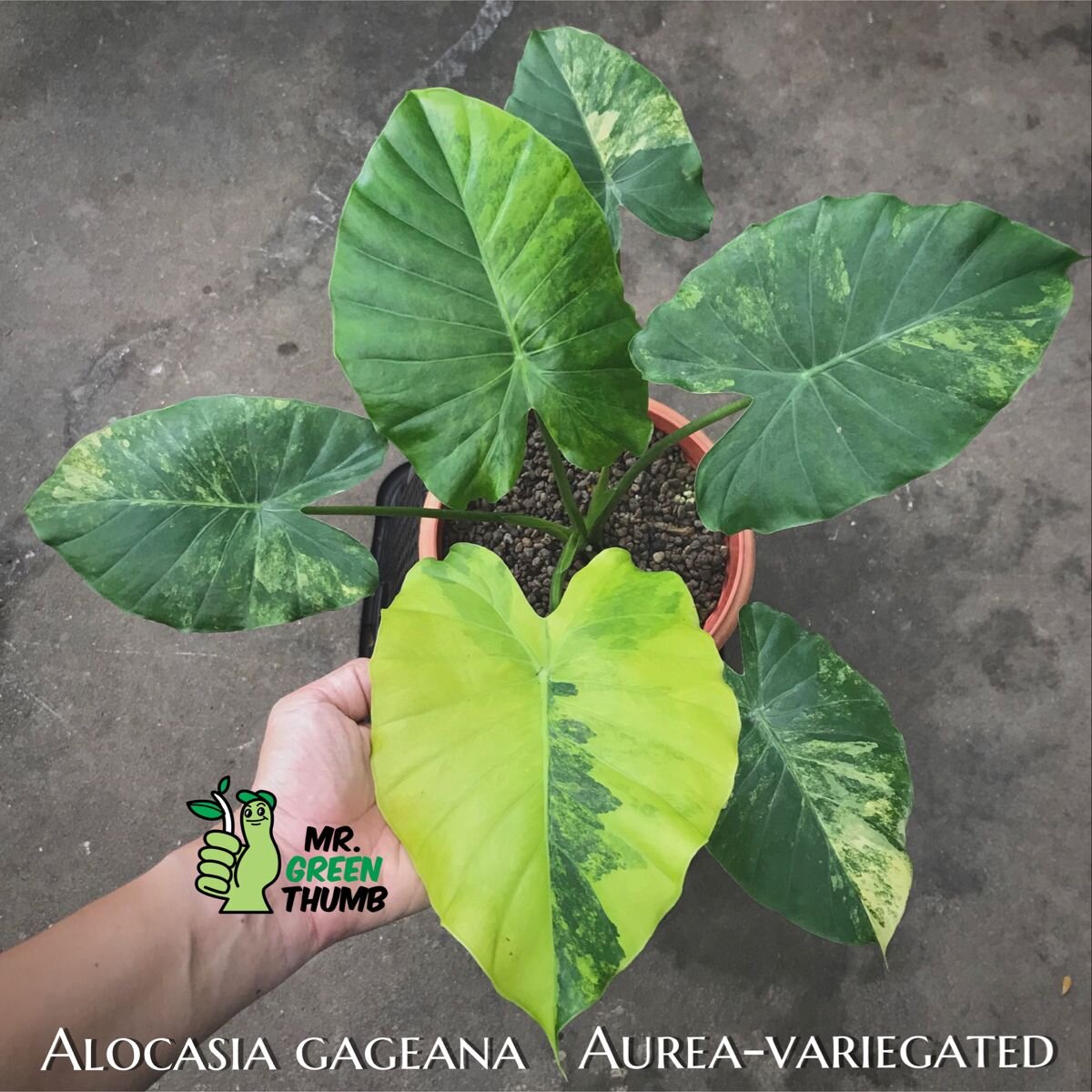ALOCASIA ODORA ‘CALIFORNIA’
SYNONYMS: Alocasia 'California', Alocasia 'Californicus Corrugata', Alocasia gageana
DISTRIBUTION: Myanmar
CLIMATE: Subtropical humid climate
Humidity is moderate throughout the year, ranging from 60% to 70%
Temperature is varies between the seasons - within the range of 48°F/9°C to 88°F/31°C during the day. Minimum temperatures never dip below 45°F/7°C
Rainy and humid season (October to May) and a dry season between June and October. The average annual rainfall is 1,200 mm
ECOLOGY: N/A
SPECIES DESCRIPTION:
The green leaves (up to 20" long by 15"wide) are undulate and very slightly sinuate at the margins. The midrib and primary surface veins are quite prominent, sunken, and enhance the appearance of this plant. It will tolerate winter temperatures down to 5°C for extended periods without going dormant.
INFLORESCENCE:
VARIEGATED FORMS: YELLOW, WHITE
ETYMOLOGY: The specific epithet was named for Sir Thomas Gage, 19th century botanist in Ireland and Portugal, after which the genus Gagea was named. He was the curator of the then Royal Botanic Garden Calcutta herbarium (1898–1905), and subsequently Superintendent of the Garden (1905–1925).
NOTES:
A 2022 publication by Hay et al. changed the pre-existing understanding of Alocasia gageana as a valid species. The original description (shown above) has been deemed a synonym for Englerarum hypnosum, while the plant currently in cultivation as Alocasia gageana was reclassified as a small and compact form of the variable Alocasia odora. The correct nomenclature for it was not indicated in the 2022 paper, but personal correspondence with both Alistair Hay and David Burnett indicates that the most appropriate name should become Alocasia odora ‘California’ or Alocasia odora var. california, as the use ‘California’ cultivar name predates that of ‘Gageana’
The earliest published instance of the name Alocasia gageana being used contemporaneously is in David Burnett’s comprehensive account of cultivated Alocasia (Burnett, 1984: 78, fg. 5), where it was reported as the botanical name already in use for the cultivar Alocasia [odora] ‘California’. Sampled from cultivation, ‘Alocasia gageana’ has not surprisingly appeared to group with Alocasia odora in molecular phylogenetic analyses (e.g. Renner & Zhang, 2004; Nauheimer et al., 2012; Lý et al., 2017; Van et al., 2017).
According to LariAnn Garner from Aroidia Research Alocasia odora ‘California’ was widely known simply as Alocasia ‘California’ at the time she used it her crosses (1979-1980). After her results appeared in Aroideana Vol. 6, No. 3, she received correspondence that the specific name of this plant is "gageana".
This Alocasia is still available in the trade for landscape use, and is easy to propagate, producing numerous offsets. Her reason for wanting to use this plant, besides the fact that it blooms easily in cultivation, is the overall look of the leaves.
Some of the progeny of the cross between Alocasia odora ‘California’ plant and Alocasia odora showed strikingly unusual characteristics. One of the unusual selections is illustrated in the Aroideana article referenced above.
As a result of diligent research by Khant Zaw Hein, it has now come to light that the original watercolor illustration at CAL, the sole element on which Engler & Krause based the species and depicted it with a small copied drawing (shown above; Engler & Krause, 1920: 80, fg. 11), is plainly of a plant conforming to Englerarum, and not an Alocasia at all (Alocasia odora for example, is a distinctive, mainly continental East Asian species with large, more or less membranous, broadly cordato-sagittate, characteristically peltate leaf blades, and glaucous spathes). The blooms in the illustration are in a centrifugal sequence in the leaf axil; the leaf blade, which is not peltate, has short posterior costae which break into branches before reaching the tip of the posterior lobes; the spathe limb is pink, cucullate and infated (though, it must be said, not as conspicuously so as is usually seen in Englerarum hypnosum); and the spadix has a long attenuate interstice, a short, broad male zone, and a long appendix abruptly narrowed at the base and tapering apically to a point, characteristic of Englerarum hypnosum (see photos in Nauheimer & Boyce, 2013; Fang et al., 2020). The illustration does not depict the stem, and hence stolons are not included. Nevertheless, the resemblance to Englerarum hypnosum is very clear.
The watercolour drawing is annotated “Drawn by Kali Pada Dass. Alocasia sp. Sent to this garden (Hort. Calcutt.) by the garden collector Shaik Mokim from Myit Kyina, Upper Burma. Received in the garden on 27.iii.1900. Flowered and figured July 1901. Leaf reduced one half natural size. Separate pistil and stamen magnifed. Rest of figures natural size. A. Gage July 1901”.
Alocasia odora ‘California’ often gets confused with Alocasia macrorrhizos, but an easy way to differentiate the two is by looking at the sinus insertion on the petiole, with Alocasia odora ‘California’ being semi-peltate. Additionally Alocasia odora ‘California’ at full size will be smaller than Alocasia macrorrhizos, and have a more oval leaf shape, while the lateral veins will be sunken as opposed to embossed in the Alocasia macrorrhizos.
Please note that this illustration was created before Alocasia gageana was reclassified as Alocasia odora ‘California’
CULTIVARS: N/A
HYBRIDS: Alocasia ‘Calidora’ (Alocasia odora x Alocasia odora ‘California’), Alocasia ‘Emerald Shield’ (Alocasia odora ‘California’ x Alocasia alba), Alocasia ‘Microdora’ (Alocasia odora ‘California’ x Alocasia odora), Alocasia ‘Pixie's Teardrops’ (mutant hybrid from Alocasia odora x Alocasia odora ‘California’), Alocasia ‘Porteana' (Alocasia odora ‘California’ x Alocasia portei)


